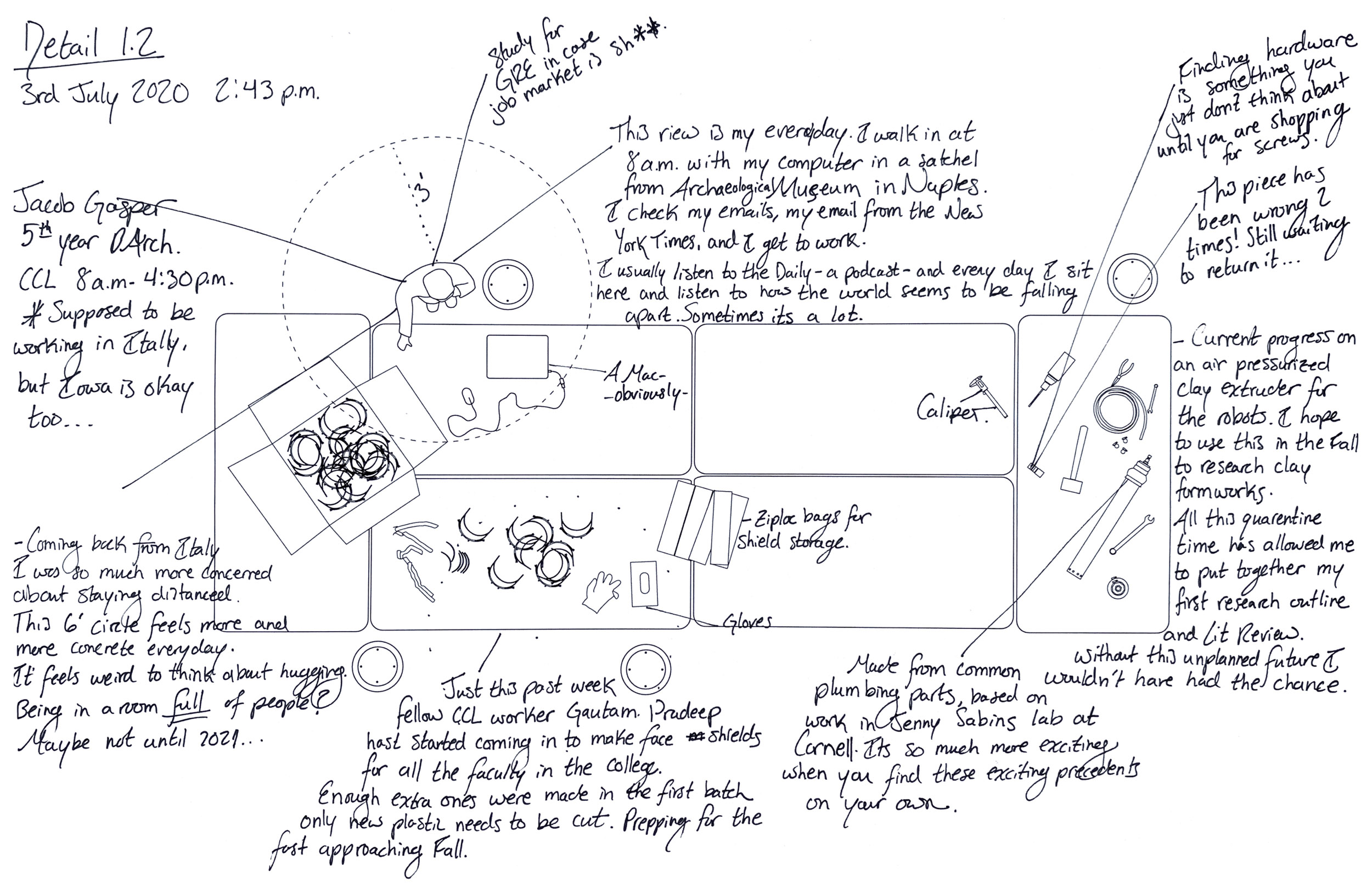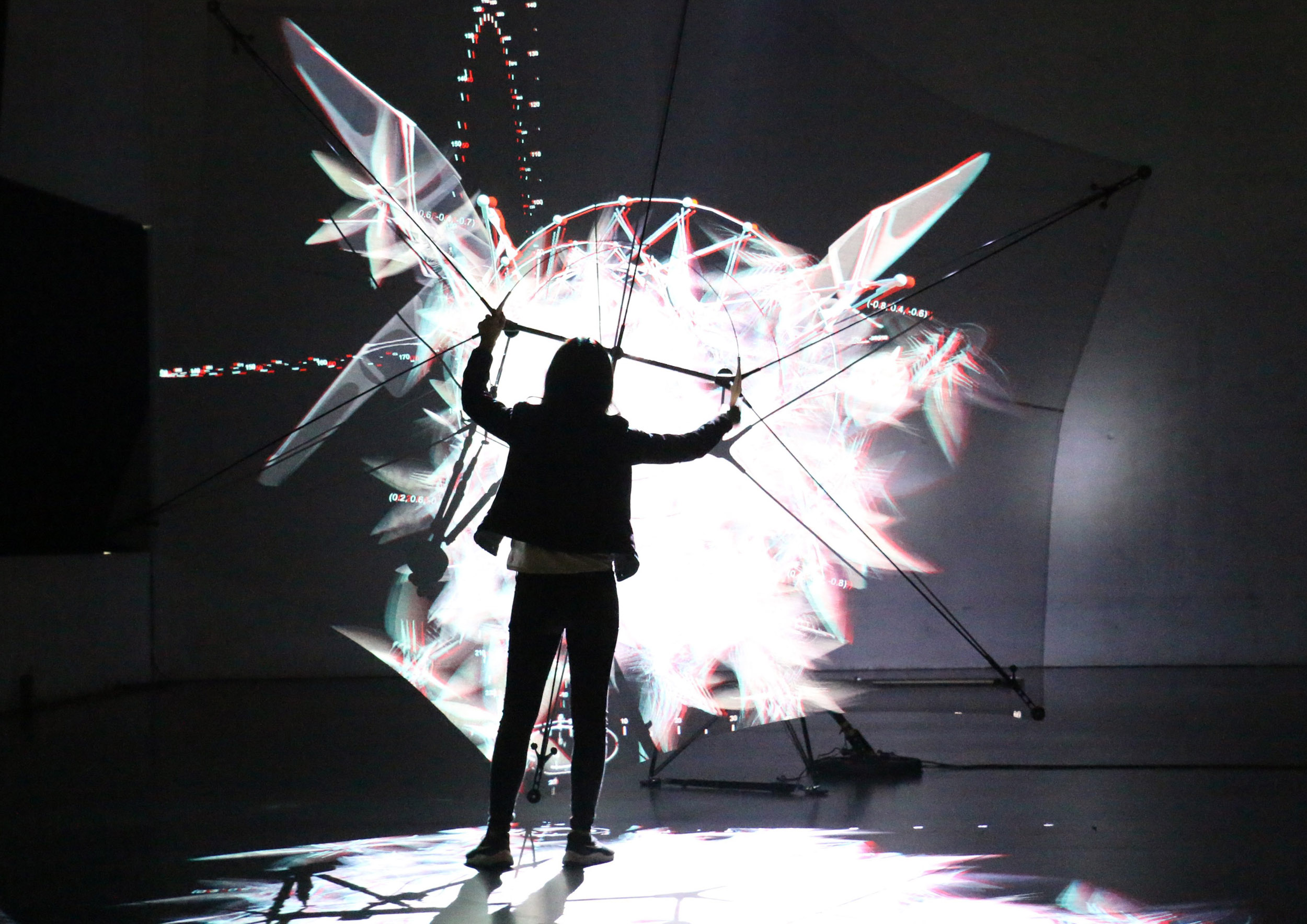Since 1981, the Association for Computer Aided Design in Architecture, or ACADIA, has held conferences at academic institutions throughout North America, bringing together a network of designers, researchers, and practitioners under a single roof. That wasn’t an option for ACADIA 2020—the 40th conference in the series—and the reality of social distancing is reflected right in the title: Distributed Proximities.
ACADIA 2020 kicks off with online workshops this weekend, with conference sessions and keynotes to follow next week. In the spirit of distributed proximity, I spoke remotely with this year’s conference chairs—Viola Ago, Matias del Campo, Shelby Elizabeth Doyle, Adam Marcus, Brian Slocum, and Maria Yablonina—as they shared their thoughts on how this year’s iteration has been positively shaped by forces outside of its control. Per their wishes, the chairs’ responses were jointly recorded.
How do you see the virtual format of this year’s conference as an opportunity?
We began planning ACADIA 2020 in March, when the pandemic was just beginning to take hold in North America. Once we realized we were doing this online, we knew we had a responsibility to respond to this moment. As an online event, it had to not just be a placeholder conference but [to] find new opportunities within this format by expanding on [the] typical material [ACADIA covers] as well as the topics that don’t come up ordinarily. The subjects of artificial intelligence and machine learning, for instance, show up more this year than [in] previous years because of [the conference’s] ability to be performed remotely and online.
And while it opened up the floor to new themes, we’re also excited [about] the fact that it also changes who is able to attend, as we can now expect a much more global audience than in previous years. This allowed us to look farther afield for speakers and workshop conductors. It also led to the second-highest number of [paper] submissions in the conference’s history; the acceptance rate this year was therefore very competitive—under 28% for paper abstracts.
During the peer review process, we attempted to be more inclusive and expanded the peer-review list to include individuals who are experts in their fields but may be new to ACADIA. As a result, the paper sessions include a balanced list of topics and themes as well as some refreshing takes on perhaps familiar projects.
In general, how does “distributed proximity” affect the necessary teamwork and reviewal processes that are critical to architectural design?
The ACADIA community has always been distributed, and long-distance collaboration has traditionally played a big role in how we learn from each other. We believe that being alone and together are both necessary for innovation. This year, however, has been a great opportunity for the community to get together and show what we have been doing in isolation while we ask ourselves to take a step back and ask questions about the field. Who is the public for computational design? Does this transition the way we work?
How have you adjusted the programming considering that wood shops, robotics, and other equipment more commonly supplied by shared creative working spaces may be off-limits right now?
Cloud-based software and robotic computing are being given considerable attention this year. A number of workshops are about machine learning, and these tools are now much more accessible from anyone’s laptop. On the hardware side, we have one workshop, led by Ethan Kerber and Sven Stumm, which allows participants to remotely simulate robotic movements, monitor fabrication progress, and adapt to inaccuracies in material in real time.
In addition, we have developed a custom conference platform for this year that allows participants to explore conference content and events in a space generated by applying an ML algorithm to the 12,000 or so submissions from previous years’ conferences (currently contained in the CumInCAD repository) to train the platform and organize content through revealing thematic relationships and visualizing connections in three dimensions. The intention is to encourage serendipitous intellectual encounters that might normally occur at an in-person conference.

This is ACADIA’s 40th conference. What would you say has most profoundly changed about the relationship between architectural design and computation over the decades?
In recent years the community has reached a level of technical maturity that allows for more expansive conversations to take place. Increasingly, the work presented at ACADIA is not so much about showcasing technical virtuosity, but more about critically understanding the value of how and why technology might have an application in architectural design. This year has made us consider that, while the level of technological advancement may have been slow or paused during the pandemic, we may use this time to consider new applications of familiar technology. The things we have had access to for the last few years simply take on new meaning when we’re all required to work remotely.
Lastly, can you tease a few highlights from this year’s conference?
Something new this year is our focus on ethics within the field of architecture. Two keynote events in particular—“A Conversation on Ecology and Ethics” featuring ecological/technological thinker Jennifer Gabrys in dialogue with computation/ethics scholar Molly Wright Steenson, and “A Conversation on Labor and Practice” featuring Peggy Deamer (co-founder of the Architecture Lobby) and Billie Faircloth (partner, KieranTimberlake) in dialogue with Mollie Claypool of UCL Bartlett—are providing an outlet for the conference to consider the responsibilities its participants may have to a wide variety of subjects.
In addition, a new submission category called Field Notes features in-progress, behind-the-scenes work, observations, and provocations related to the current moment. The call [for papers] was for a glimpse behind the curtain, rather than a fully polished paper, to hopefully even show the process of failing as a productive part of the design process. One project by Jacob Gasper, entitled Pandemic Pause, explores the shift in working styles necessary during quarantine.
As an additional educational resource, we have compiled a reading list sourced from the keynote participants, the Conference Bookshelf, which we hope will extend the conversations beyond the conference to classrooms and practices. And in an effort to include as many participants as possible, we are excited to announce that, thanks to the generous sponsorship of Autodesk, we are offering free conference registration to all students globally. The Autodesk sponsorship has also provided over 60 grants for members of NOMA, NOMAS, and international students to attend the workshops at no cost.
Top image: LightWing II by Uwe Rieger and Yinan Liu (Courtesy the designers)
